The Valley of Decision

Brief Synopsis
Cast & Crew
Tay Garnett
Greer Garson
Gregory Peck
Donald Crisp
Lionel Barrymore
Preston Foster
Film Details
Technical Specs

Synopsis
In 1873, Irish immigrant Mary Rafferty lives with her wheelchair-bound father Pat and her widowed sister, Kate Shannon, in a small shack in an area of Pittsburgh known as "The Flats." One day, Mary tells her father that she has accepted a job as a live-in maid at the home of steel mill owner William Scott. Patrick, who lost his legs in an accident at Scott's mill and is embittered toward the family, angrily disapproves of Mary's decision. Soon after starting her job, Mary endears herself to William's wife Clarissa, his daughter Constance, and his three sons, Ted, William, Jr., and Paul. Mary falls instantly in love with Paul, who has just returned home from London and has big plans to modernize the furnace at the Scott mill. A romance soon flourishes between Paul and Mary, much to the consternation of Louise Kane, a cunning snob who is determined to marry Paul for his money. One year passes, and Paul proposes to Mary, but Mary rejects the idea because it would be improper for her, a servant, to marry her master's son. Constance, meanwhile, secretly marries Giles, the Earl of Moulton. After announcing the marriage to her parents, Constance asks her mother for permission to take Mary with them to England. Clarissa consents to the arrangement, and Mary leaves Pittsburgh without bidding farewell to Paul. Two years pass, and when William learns that Paul is in love with Mary, he recalls Mary to Pittsburgh and gives his blessing to their marriage. Paul and Mary resume their romance, but Mary's happiness is soon dampened by the discovery that her father has been leading a crippling and violent strike against William's mill. When she overhears William's plan to send in strikebreakers, Mary negotiates a temporary truce and arranges a meeting between the strikers and William. Ted is sent by his father to meet the arriving strikebreakers at the train station and send them home, but he gets drunk and fails to deliver his father's message. As a result, the strikebreakers arrive at the meeting, and a bloody riot ensues. Patrick and William are killed in the fight, and their deaths fill Mary with so much grief that she concludes that she and Paul can never marry. The passage of ten years finds Paul in a loveless marriage with Louise, and the father of a young boy. One day, the aged and ailing Clarissa sends for Mary, her truest friend, and tells her that she is willing her share of the mill to her. Following Clarissa's death, Ted, William, Jr. and Constance decide to sell the Scott mill, despite Paul's impassioned pleas to keep it in the family. Paul nearly loses the family mill until Mary sides with him and persuades Constance to change her allegiances. Paul then leaves Louise, who has only shown an interest in his money, and goes to Mary.

Director

Tay Garnett
Cast

Greer Garson

Gregory Peck
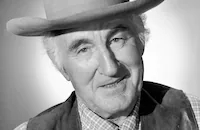
Donald Crisp
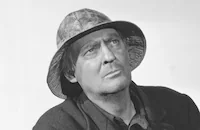
Lionel Barrymore

Preston Foster

Marsha Hunt

Gladys Cooper

Reginald Owen
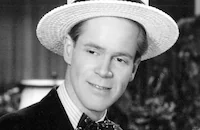
Dan Duryea

Jessica Tandy
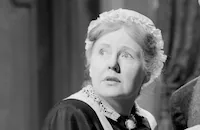
Barbara Everest

Marshall Thompson

Geraldine Wall

Evelyn Dockson
John Warburton

Russell Hicks
Mary Lord

Arthur Shields

Dean Stockwell
Mary Currier

Moroni Olsen
Norman Ollestad

Connie Gilchrist
Wayne Farlow
Warren Farlow
Willa Pearl Curtis
Jesse Graves

Lee Phelps
Harry Strang
William O'leary
Richard Abbott
Joy Harrington
Bryn Davis
Lumsden Hare
Anna Q. Nilsson
Sherlee Collier
Fred Chapman
Timmy Hawkins
Gerald Mackey
Vincent Graeff
Pat Ryan
Mike Ryan
Jim Farley
George Sherwood
Kernan Cripps
Crew
Earl Cates
George Cukor
Mark Davis
Jack Dawn
John F. Dullam
Herbert Fischer
James Z. Flaster
Cedric Gibbons
A. Arnold Gillespie
Mildred Griffiths
Paul Groesse
Sydney Guilaroff
Irene
Don Jahraus
Marion Herwood Keyes
Edwin H. Knopf
Standish J. Lambert
Sonya Levien
M. J. Mclaughlin
John Meehan
Warren Newcombe
Joseph Ruttenberg
Blanche Sewell
Douglas Shearer
Robert W. Shirley
Newell Sparks
William Steinkamp
Michael Steinore
Herbert Stothart
Walter Strohm
Marvin Stuart
John A. Williams
Edwin B. Willis

Photo Collections
Videos
Movie Clip



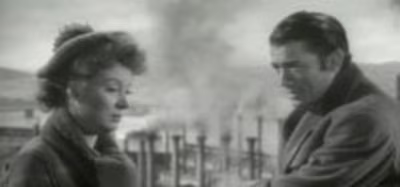
Trailer
Film Details
Technical Specs

Award Nominations
Best Actress
Best Score
Articles
The Valley of Decision
In 1944, Gregory Peck could write his own ticket in Hollywood. The 28-year old actor had made his name a couple of years before in the plays The Morning Star (1942) and The Willow and I (1942). Not only was he young, sexy and an accomplished actor, he was one of the few men of his age and looks not off fighting in World War II, having been sidelined by an old spinal injury.
Peck may have been young when MGM approached him to play the romantic lead in The Valley of Decision, but he already knew what he wanted, to be able to pick and choose from the best roles the movie studios and the stage were offering. Unfortunately, Louis B. Mayer also knew what he wanted: to sign this young man to a seven-year exclusive contract. Peck later recalled the meeting, "Initially, he used the fatherly approach, pointing out how he had sired the careers of numerous actors. When I declined to budge, he shifted his campaign to an attack against the legitimate theater, demeaning my career in the process." When that failed to work, "he pulled out a handkerchief and began to cry, deeply saddened by my ingratitude which wouldn't allow him to make me the biggest movie star of all time." Despite the tears, Peck stuck to his demands and signed to a four-picture, non-exclusive contract.
The film, The Valley of Decision, was based on a popular novel by Marcia Davenport, an author best remembered now for her excellent 1932 biography of Wolfgang Amadeus Mozart. Peck plays Paul Scott, the son of a steel mill owner (Donald Crisp) who falls in love with the family's Irish maid, Mary (Greer Garson). Mary's father (Lionel Barrymore) was a worker in that mill, but is now in a wheelchair due to an accident for which he holds Peck's father accountable. When a strike shuts down the mill and her father leads an uprising, Mary tries to bring the warring families to peace.
Also present in this lavish big-budget re-creation of 1870's Pittsburgh is 35-year old Jessica Tandy as Peck's shrewish wife. Her husband Hume Cronyn was originally cast as Gregory Peck's brother until the casting director noticed that the eight-inch difference in their heights made them an unlikely pair of siblings. Tay Garnett, who a year later would make his most famous film, The Postman Always Rings Twice (1946), was chosen to direct and Joseph Ruttenberg, Academy Award winner for The Great Waltz (1938) and Mrs. Miniver (1942), manned the camera.
The movie, Peck's third, made him a star but it was Greer Garson who received an Academy Award® nomination, losing to Joan Crawford's Mildred Pierce (1945). The box-office draw was also impressive, earning $4,566,374 in the United States, making it the year's fifth biggest draw. Garson, however, was tired of the upstanding, long-suffering parts Mayer was giving her and begged him for sexier, more alluring roles. Mayer gave in against his better judgment and her next film, Adventure (1945), was the movie where "Gable's back and Garson's got him!" The public refused to accept Garson in this new image leaving The Valley of Decision as her last hit movie. Sometimes L.B. Mayer did know what was best for his actors.
Director: Tay Garnett
Producer: Edwin H. Knopf
Screenplay: Sonya Levien, John Meehan, based on the novel by Marcia Davenport
Cinematography: Joseph Ruttenberg
Music: Herbert Stothart
Editing: Blanche Sewell
Art Direction: Cedric Gibbons, Paul Groesse
Cast: Greer Garson (Mary Rafferty), Gregory Peck (Paul Scott), Donald Crisp (William Scott), Lionel Barrymore (Pat Rafferty), Preston Foster (Jim Brennan), Jessica Tandy (Louise Kane).
BW-119 min. Closed captioning.
by Brian Cady

The Valley of Decision
Quotes
Trivia
Notes
According to a February 1943 Hollywood Reporter news item, M-G-M paid $75,000 for the rights to Marcia Davenport's novel. A February 21, 1945 Hollywood Reporter news item notes that George Cukor took over direction of added scenes from Tay Garnett when Garnett became ill. A pre-production news item in Hollywood Reporter notes that John Hodiak was originally slated for the part played by Gregory Peck. The initial Hollywood Reporter production chart for the film lists Hume Cronyn in the cast, but he did not appear in the released film. According to modern sources, Cronyn was originally cast in the part of "Ted Scott," but was later replaced by Marshall Thompson because Cronyn appeared too short when standing beside Peck in the film. Early Hollywood Reporter production charts list Sara Allgood, Mary Philips and Edith Leach in the cast, and Hollywood Reporter news items include Alec Craig, Dorothy Russell and Robert and Richard Ganieri in the cast. Allgood, Philips and Craig were not in the released film, and the appearance of Leach and Robert and Richard Ganieri has not been confirmed. Actor Dean Stockwell made his motion picture debut in the film. Greer Garson was nominated for an Academy Award for Best Actress, and Herbert Stothart was nominated for Best Scoring of a Dramatic or Comedy Picture. The film received Photoplay's Best Picture award. On March 20, 1960, the CBS network aired a television version of The Valley of Decision, directed by Tom Donovan and starring Nancy Wickwier and Lloyd Bridges.















